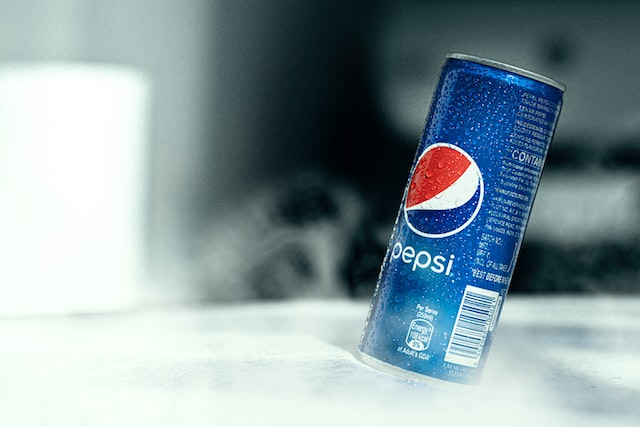Before we get into the specifics of Pepsi, let’s understand competitor analysis. Competitor analysis is a strategic research method companies use to identify, evaluate, and understand their current and potential competitors within the market. It’s an essential business strategy component and instrumental in understanding the industry landscape.
The process usually involves the following steps:
- Identifying Key Competitors: The first step is to identify who your competitors are. These may be direct competitors (those who offer the same or similar products or services as you) or indirect competitors (those who provide different products or services but compete for the same consumer dollar).
- Analyzing Competitors’ Strategies and Objectives: Once competitors are identified, the next step is to understand their business strategies and objectives. This may involve analyzing their marketing materials, financial performance, customer reviews, or any public information available about the company.
- Assessing Competitors’ Strengths and Weaknesses: This step involves evaluating the identified competitors’ strengths and weaknesses. Strengths include unique products or services, strong brand recognition, and superior customer service. Weaknesses include poor product quality, weak customer service, or high prices.
- Understanding Competitors’ Products/Services: Understanding what your competitors offer and how your products or services compare is essential. This could involve looking at features, quality, pricing, customer service, and marketing strategies.
- Observing Competitors’ Reaction Patterns: Some companies react more aggressively than others when faced with competition. Understanding these patterns lets you predict how these companies might respond to your business strategies.
- Drawing Conclusions and Formulating Strategy: The final step is to take all the information gathered from the analysis, draw meaningful conclusions, and use those to formulate or adjust your business strategies.
The main goal of a competitor analysis is to understand the competitive landscape, spot opportunities, and threats, and position your company most advantageously. It helps to inform strategic decisions, from product development to marketing and sales efforts. Now, let’s do a competitor analysis of Pepsi.
Here is the competitor analysis of Pepsi
Coca-Cola
- Product Diversification: Pepsi offers a wide range of beverages, including soft drinks, energy drinks, juices, and bottled water, to cater to diverse consumer preferences. This mirrors Coca-Cola’s diverse product line, allowing Pepsi to compete across multiple beverage segments.
- Brand Positioning and Marketing: Pepsi often positions itself as a youthful and modern brand, targeting younger demographics with its marketing campaigns. This contrasts Coca-Cola, which frequently emphasizes tradition and nostalgia in its branding.
- Pricing Strategies: Competitive pricing is a crucial aspect of Pepsi’s strategy. In many markets, Pepsi products are priced competitively with Coca-Cola’s, and promotional pricing strategies are often used to attract consumers.
- Innovation and New Products: Pepsi regularly introduces new flavors and products to keep its product line fresh and appealing. This includes limited edition flavors, healthier options, and products designed for specific regional tastes.
- Global Reach and Local Adaptation: While both companies have a solid international presence, Pepsi often adapts its products and marketing strategies to suit local preferences and cultural nuances.
- Strategic Partnerships and Sponsorships: Pepsi invests heavily in partnerships and sponsorships in sports, music, and entertainment to enhance its brand visibility and appeal, similar to Coca-Cola’s marketing strategies.
- Sustainability and Corporate Responsibility: In response to growing consumer concern about environmental and social issues, Pepsi has been focusing on sustainability initiatives and corporate responsibility to improve its public image and appeal to socially conscious consumers.
- Distribution and Supply Chain Efficiency: Pepsi continually works on optimizing its distribution and supply chain to ensure the wide availability of its products, competing with Coca-Cola’s extensive global distribution network.
- Direct Comparison Advertising: Historically, Pepsi has engaged in advertising that directly compares its products to Coca-Cola’s, most famously in the “Pepsi Challenge” campaigns.
Dr Pepper Snapple Group
- Wide Product Range: Pepsi offers a broad portfolio of beverages, including soft drinks, juices, sports drinks, and bottled water. This extensive range allows Pepsi to compete across various beverage segments where Dr Pepper Snapple Group has a presence.
- Marketing and Branding: Pepsi uses aggressive marketing and branding strategies to appeal to a broad consumer base. Their marketing often focuses on a youthful and energetic image, which helps them compete with Dr Pepper Snapple’s brands with distinct marketing approaches.
- Distribution Network: Pepsi has strong and expansive distribution network, which allows it to make its products available in many locations worldwide. This extensive distribution is a critical factor in competing with the Dr Pepper Snapple Group, which also has a significant distribution network.
- Innovation and New Product Development: Pepsi consistently introduces new flavors, limited-edition products, and healthier alternatives to stay relevant and appealing to consumers. This innovation is key in competing with Dr Pepper Snapple’s diverse product offerings.
- Pricing Strategy: Pepsi often employs competitive pricing strategies to attract consumers, which is essential in competing with Dr Pepper Snapple products that are also competitively priced.
- Strategic Partnerships and Sponsorships: Pepsi engages in various partnerships and sponsorships in sports, music, and entertainment. These initiatives increase brand visibility and appeal, helping to compete with Dr Pepper Snapple’s advertising and promotional efforts.
- Focus on Health-Conscious Consumers: With a growing trend towards healthier lifestyles, Pepsi has expanded its portfolio to include lower-calorie, lower-sugar, and more natural options. This strategy helps them to compete in segments where Dr Pepper Snapple Group offers similar health-conscious products.
- Global Presence: Pepsi’s global presence and brand recognition are leveraged to compete in international markets where Dr Pepper Snapple operates.
Red Bull
- Product Development and Diversification: Pepsi has expanded its product line to include energy drinks, directly competing with Red Bull. Brands like Mountain Dew Game Fuel and Rockstar, which PepsiCo acquired, are positioned to compete in the energy drink segment.
- Targeted Marketing: Pepsi’s marketing strategies often focus on younger demographic and active lifestyle consumers, similar to Red Bull’s target audience. Pepsi enhances its visibility in these areas by using sports, music, and entertainment sponsorships.
- Global Distribution Network: Leveraging its extensive global distribution network, Pepsi ensures its energy drink products are widely available, competing with Red Bull’s strong presence in numerous markets worldwide.
- Innovative Branding and Promotions: Pepsi uses innovative branding and promotional campaigns to appeal to consumers, challenging Red Bull’s well-known marketing and branding efforts.
- Partnerships and Sponsorships: Like Red Bull, known for its sponsorships in extreme sports and music festivals, Pepsi engages in various partnerships and sponsorships in similar areas to enhance brand recognition and appeal.
- Pricing Strategies: Pepsi employs competitive pricing for its energy drinks, which is crucial in competing with Red Bull’s products, which often command a premium price.
- Health-Conscious Products: Recognizing the growing consumer interest in healthier beverages, Pepsi has introduced energy drinks with natural ingredients, lower sugar content, and other health-conscious features, catering to a segment of consumers who might be hesitant about traditional energy drinks like Red Bull.
- Research and Consumer Insights: Pepsi invests in market research and consumer insights to understand changing consumer preferences, which helps them to develop products and marketing strategies that can effectively compete with Red Bull.
Nestlé
- Bottled Water and Healthy Drinks: Nestlé, known for its bottled water brands like Nestlé Pure Life and San Pellegrino, faces competition from Pepsi’s Aquafina and other water and healthy beverage offerings. Pepsi has also ventured into flavored and functional waters to expand its market presence.
- Diversified Product Portfolio: Both companies offer a range of products beyond their core beverage lines. Pepsi, through its subsidiary Frito-Lay, competes in the snack food market, where Nestlé also has a presence with its various food products.
- Global Distribution and Market Presence: Pepsi leverages its extensive global distribution network to compete in markets where Nestlé is also a strong player. This widespread presence is crucial for competing in different regional markets.
- Innovation and New Product Development: Pepsi continuously innovates and introduces new products to meet evolving consumer tastes and preferences. This innovation is key in competing with Nestlé, which also strongly emphasizes product development.
- Focus on Health and Wellness: Responding to a growing consumer focus on health and wellness, Pepsi has expanded its portfolio to include healthier options and alternatives, competing with Nestlé’s similar initiatives.
- Sustainability Initiatives: Pepsi and Nestlé increasingly focus on sustainability and environmentally friendly practices. This includes efforts in packaging, water usage, and sourcing, which are becoming important for consumers.
- Advertising and Branding Strategies: Pepsi’s strong branding and aggressive marketing campaigns are instrumental in maintaining brand visibility and appeal, competing with Nestlé’s well-established branding across its product range.
- Pricing and Promotional Strategies: Competitive pricing and regular promotions help Pepsi to remain an attractive option for consumers, competing with Nestlé’s pricing strategies in various markets.











